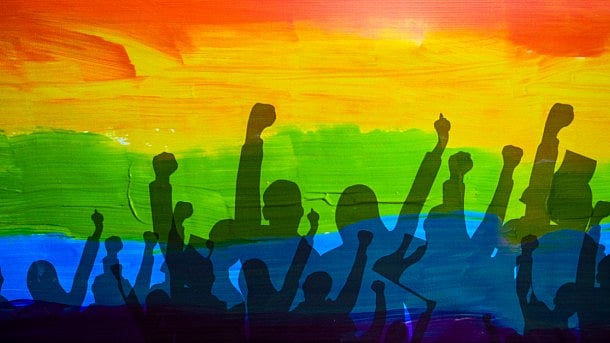
Rainbow alliance graphic for representative purpose.
Credit: iStock Photo
In conversations around contemporary gender diversity, certain voices persistently remain unheard. The specific struggles of transmen (female-to-male transgender persons) are characteristically invisibilised, even amid the growing visibility of the broader transgender movement. Globally, transmen face structural erasure—not only due to their gender-diverse identities, but also because they were born in female bodies, traditionally viewed as inferior.
The oppression faced by transmen extends beyond transgender rights alone. It intersects with feminist critiques of patriarchal structures that devalue and punish bodies assigned female at birth. Patriarchal norms—and the predictability of the gender binary—have long been upheld through violence against such bodies. The very existence of transmen disrupts these norms by challenging the social codes associated with femininity. Thus, they are often systematically concealed from the social fabric through both direct violence and symbolic exclusion.
In India, this silencing is intensified by the intersections of caste, class, and religion, placing transmen in particularly precarious positions. Even in relatively progressive states like Karnataka—widely regarded as trans-inclusive since the early 1990s—transmen continue to face social invisibility and institutional neglect. Community-based studies and reports show that, compared to their transwomen (male-to-female) counterparts, transmen remain less represented in policy, discourse, and public imagination. This disparity raises a broader concern about the limitations of the so-called inclusive frameworks: What does representation mean when even the margins have margins?
Violence and crimes against transmen are rarely reported in the media, discussed in academic spaces, or acknowledged in rights-based dialogues. But this absence of visibility should not be mistaken for an absence of violence. Rather, it reveals a societal tendency to suppress or erase expressions that unsettle the binary normativity—particularly in the case of men born in women’s bodies.
Violence against transmen is disturbingly common, often taking the form of ‘corrective rapes.’ These acts generate deep psychological trauma, targeting not only the body but also brutally negating their masculine identity. In a recent conversation I had with a transman in Bengaluru about these experiences, he shared:
“My body is like a woman’s. Though I identify as a man, society focuses only on biological sex. So, when I came out, I was always afraid of sexual threats. I always feel that if someone were to rape my female body, I would not be able to become a man.”
In cases of rape or sexual assault against transmen, legal redress is nearly impossible. Sections 63 to 73 of the Bhartiya Nyaya Sanhita (BNS) stipulate provisions specifically pertaining to the rape of women. This reasserts the privilege of the androcentric, penile-orientated idea of manhood and masculinity and the assumption that “men are incapable of being raped.” The repeal of section 377 of the Indian Penal Code has created a legal vacuum with no clear replacement in the BNS addressing sexual offences against men.
Medically, articulation of transmasculine bodies continues to remain in uncertainty. Healthcare providers often discourage transmen from undergoing gender-affirming surgeries as ‘unnecessary’. For most transmen, accessing gender-affirmation surgeries remains expensive. In many cases, even when transmen could undergo gender-affirming procedures such as mastectomy along with removal of the uterus and ovaries, they are often arbitrarily misclassified as gynaecological procedures. Such misclassification not only undermines transmasculine identity and dignity but also their claim to legal protection, facilities, or schemes available for the transgender community. Even post-transition, transmen continue to be classified as physiologically female by healthcare providers, not acknowledging individuals’ right to make decisions about their bodies.
This rigid classification and outdated knowledge system, coupled with a profound lack of awareness and sensitivity, further contributes to erasure and misidentification of transmen.
In the ongoing movement for transgender rights and liberation, personal stories of transmen are seldom highlighted, trapping them in a cycle of violence and silence. Thus, coming out remains a difficult or sometimes impossible choice for transmen. Consequently, many are forced to choose self-preservation, where silence and invisibility become inevitable. Raahi, a Karnataka-based organisation, actively challenges this invisibility by offering crisis support, shelter, legal aid, and mental health services for transmen and their partners. I learnt that the organisation not only creates space for care and solidarity but also ensures that transmen’s voices are affirmed, which is vital in breaking the cycle of erasure.
(The writer is a trans ally and teaches transgender and non-
binary discourse at NLSIU, Bengaluru)
The views expressed above are the author's own. They do not necessarily reflect the views of DH.